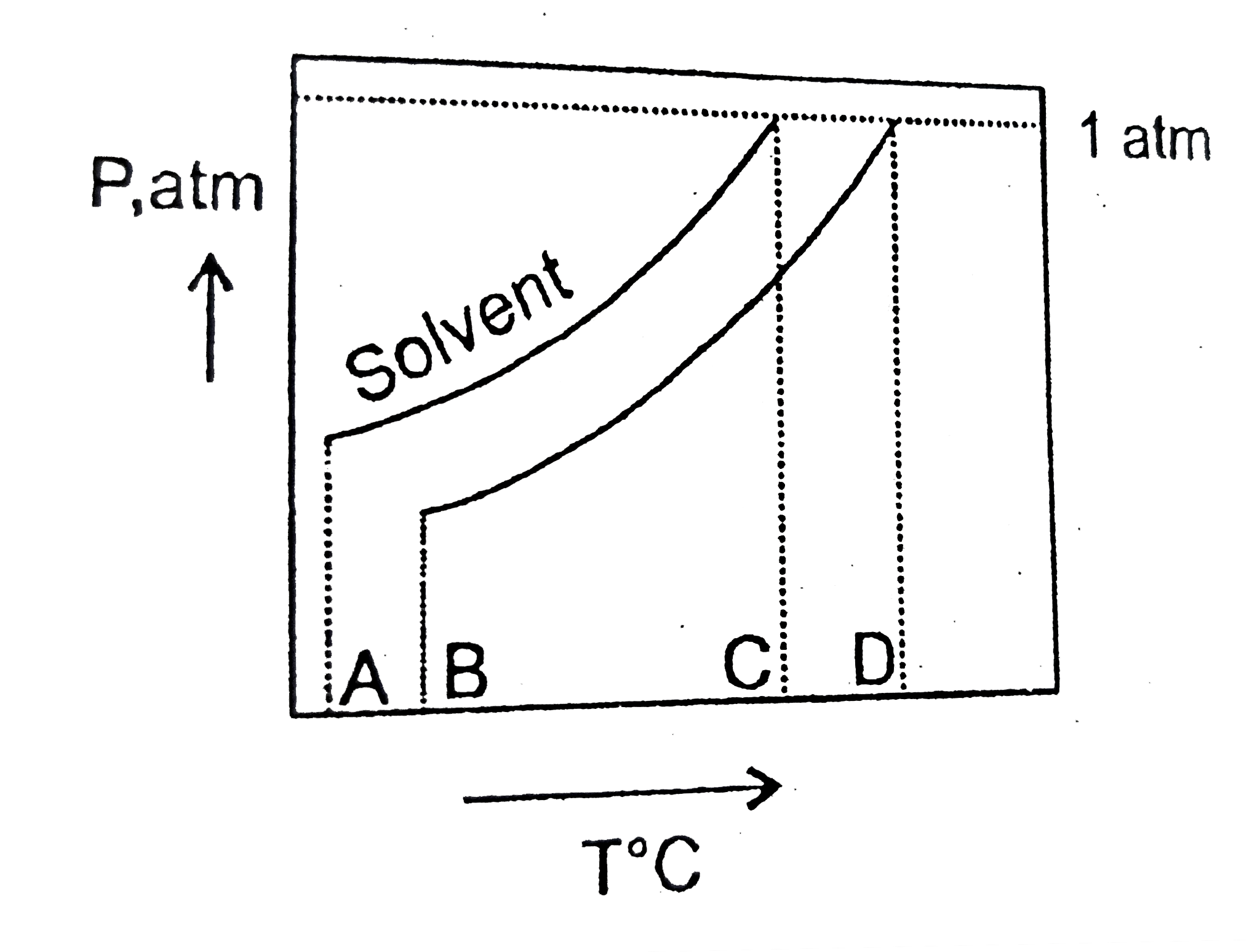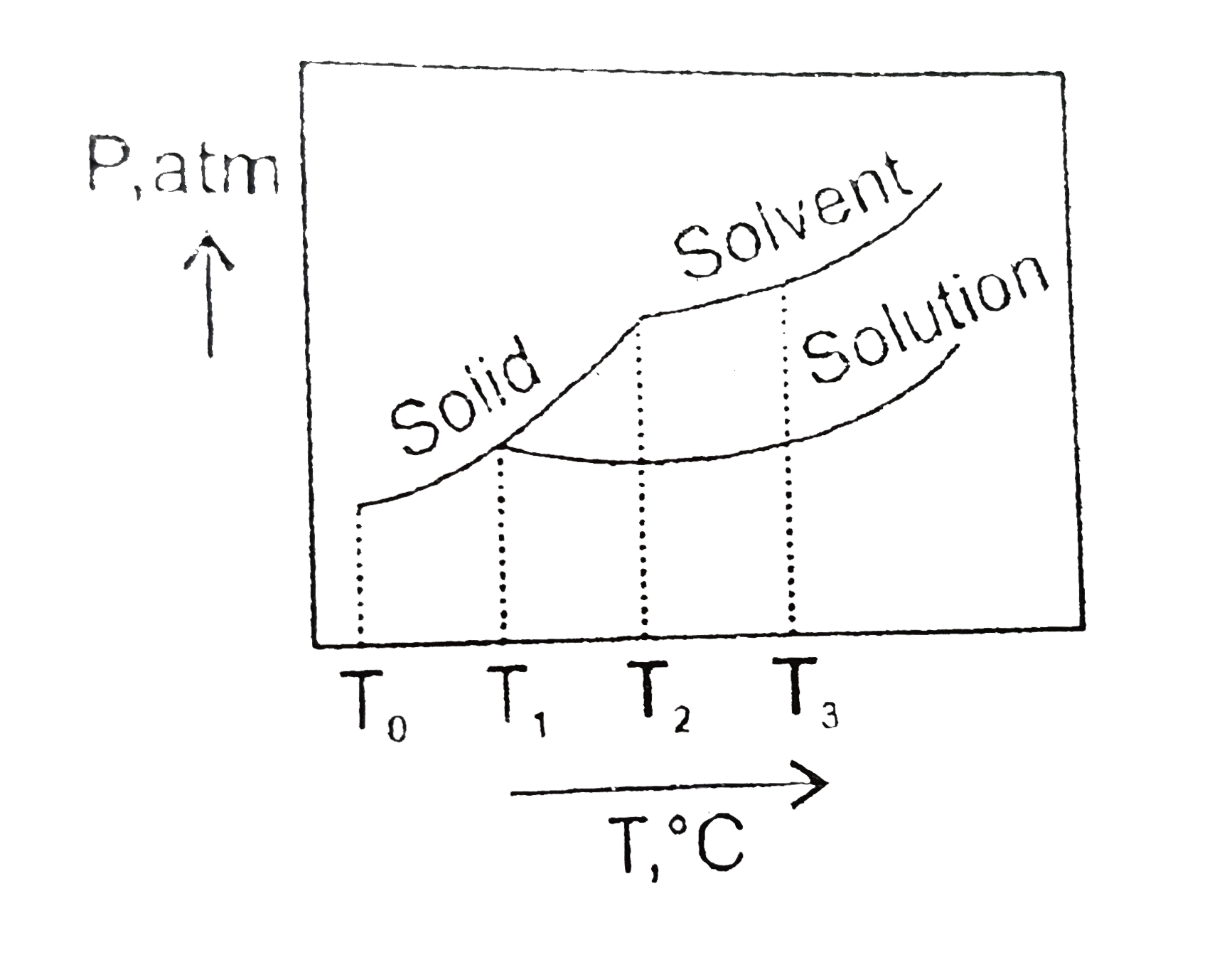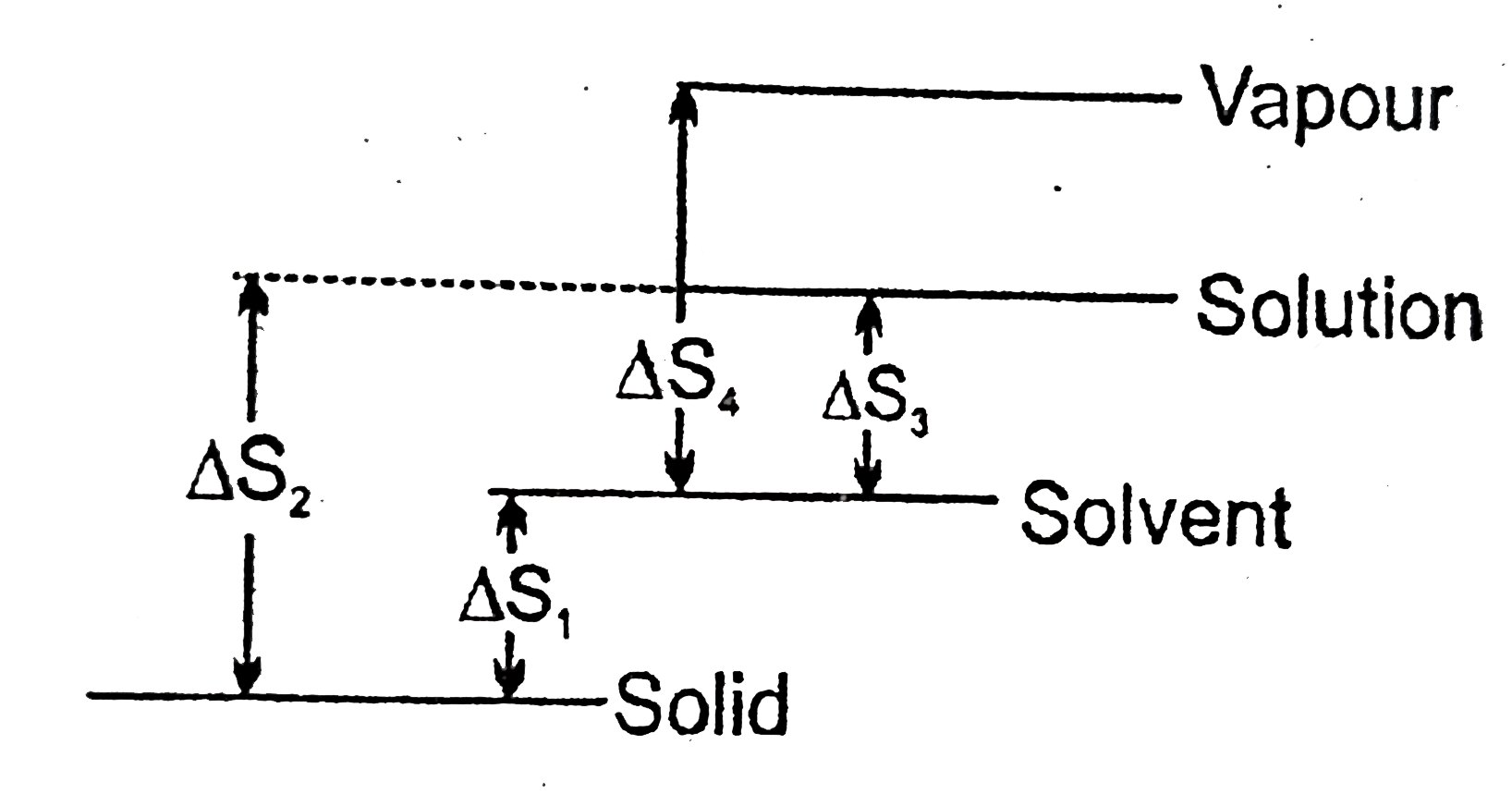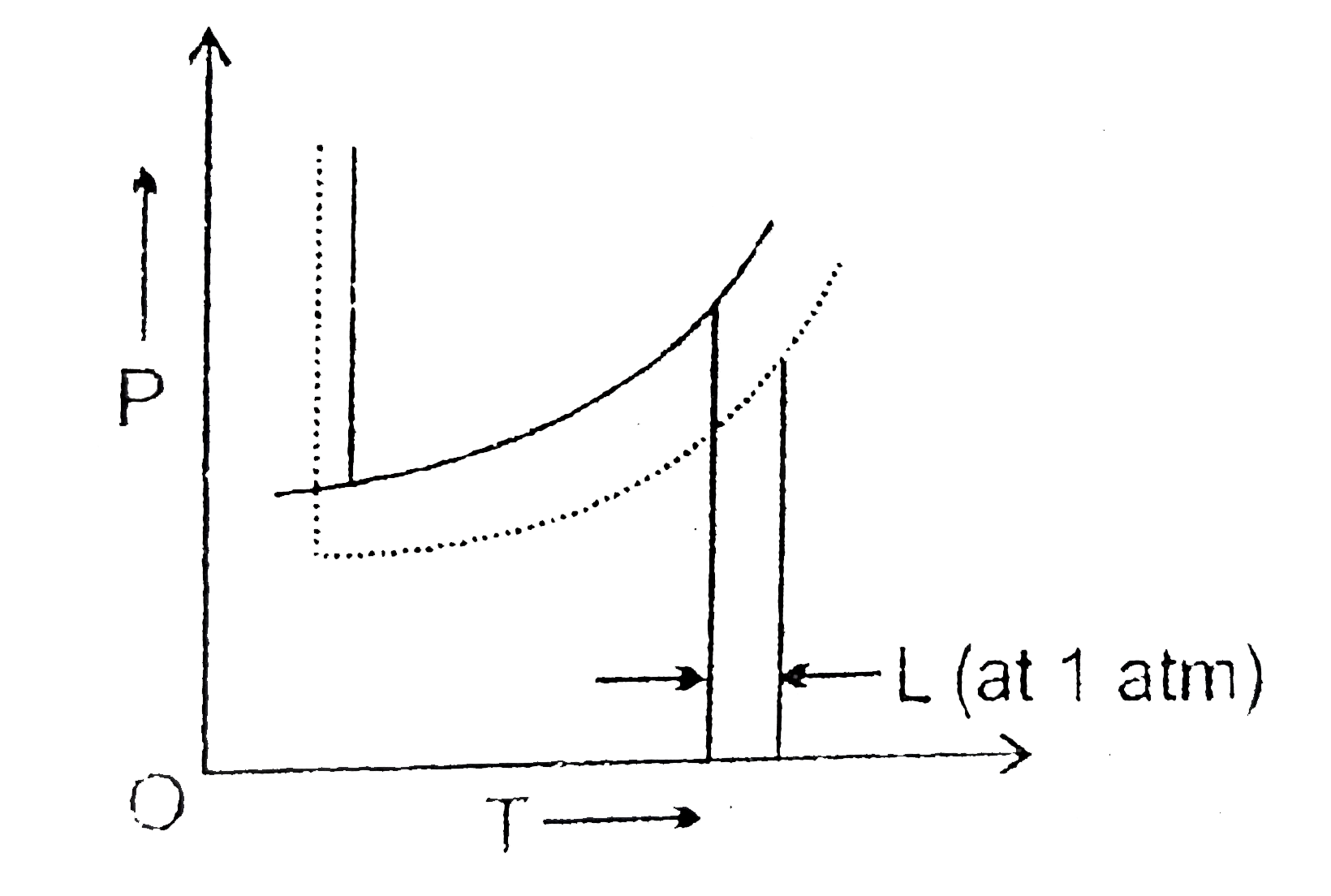Complete Solutions to Advabced Level Problems (PART-1) of chapter SOLUTIONS of Class 12 book with complete answers and questions
| Class 12 | CHEMISTRY |
| Chapter | SOLUTIONS |
| RESONANCE | Advabced Level Problems (PART-1) |
| Number Of Questions | 71 |
| Academic Year | 2023-24 |
The concentration of pollutant in `ppm (w//w)`. That has been measured at `450mg` per `150kg` of sample is
01:08View SolutionAvailable are `1L` of `0.1M NaCl` and `2L` of `0.2M CaCl_(2)` solutions. Using only these two solutions what maximum volume of a solution can be prepared having `[Cl^(-)]=0.34M` exactly. Both electrolytes are strong
View SolutionMole fraction of `C_(3)H_(5)(OH)_(3)` in a solution of `36g` of water and `46g` of glycerine is:
01:51View SolutionThe solubility of gases in liquids:
02:10View SolutionColligative properties have many pracitical uses, some of them may be:
I: Melting of snow by slat
II: Desalination of sea water
III: Desalination of sea water
III: Determination of molar mass
IV: Determination of melting point and boiling point of solvent
Actual practical uses are :01:56View SolutionSelect correct statement(s):
01:39View SolutionA complex containing `K^(+),Pt(IV)` and `Cl^(--)` is `100%` ionised giving `i=3`. Thus, complex is:
01:36View SolutionIn which case, van't Hoff factor I remains unchanged ? ( Assume common complexes of these ions)
04:15View SolutionIf `pK_(a)=-"log"K_(a)=4`, and `K_(a)=Cx^(2-)` then Van't Hoff factor for weak monobasic acid when `C=0.01M` is:
02:05View SolutionConsider which can be expressed is degree (temperature) are
View SolutionElevation in `b.p.` of an aqueous urea solution is `0.52^(@), (K_(b)=0.622^(@) "mol"^(-1)kg)` Hence, mole-fraction of urea in this solution is :
01:43View SolutionInsulin `(C_(2)H_(10)O_(5))_(n)` is dissolved in a suitable solvent and the osmotic pressure `(pi)` of solutions of various concentrations `(g//cm^(3))C` is measured at `20^(@)C`. The slope of a plot of `pi` against `C` is found to be `4.65 xx 10^(-3)`. The molecular weight of insulin is:
02:43View SolutionWhat is the normal boiling point of the solution represented by the phase diagram ?
 01:29View Solution
01:29View SolutionSelect correct statement ?
04:53View SolutionRatio at `DeltaT_(b)//K_(b)` of `6% AB_(2)` and `9%A_(2)B(AB_(2)` and A_(2)B` both are non-electolytes) is `1 "mol"//kg` in both cases. Hence, atomic masses of `A` and `B` are respectivly :
View SolutionAn aqueous solution of a solute AB has b.p. of `101.08^(@)C( AB` is `100%` ionised at boiling point of the solution ) and freezes at `-1.80 ^(@)C`. Hence, `AB(K_(b)//K_(f)=0.3)`
03:05View SolutionDensity of `1M` solution of a non-electrolyte `C_(6)H_(12)O_(6)` is `1.18g//mL`. If `K_(f)(H_(2)O)` is `1.86^(@)kg`, solution freezes at :
01:50View SolutionMole fraction of a non-electrolyte in aqueous solution is `0.07`. If `K_(f)` is `1.86^(@) "mol"^(-1)kg`, depression if `f.p.,DeltaT_(f),` is:
02:15View SolutionWhat is the normal freezing point of the solution represented by the phase diagram ?
 01:28View Solution
01:28View SolutionSelect correct staement :
01:58View SolutionSome entropy change are represented infigure. Select correct entropy change.
 01:13View Solution
01:13View SolutionTotal vapour pressure of mixture of `1` mol of volatile component `A(P_(A^(@))=100mmHg)` and `3` mol of volatile component `B(P_(B^(@)=60 mmHg)` is `75mm`. For such case:
01:56View SolutionWater and chlorobenzene are immiscible liquids. Their mixture boils at `89^(@)C` under a redued pressure of `7.7 xx10^(4)Pa`. The vapour pressure of pure water at `89^(@)C` is `7xx10^(4)Pa`. Weight per ccent of chlorobenzene in the distillate is `:`
05:15View SolutionRelative decrease in vapour pressure of an aqueous `NaCl` is `0.167`. Number of moles of `NaCl` present in `180g` of `H_(2)O` is:
01:14View SolutionWhich statement comparing solutions with pure solvent is not correct
01:29View SolutionA colligative property of a solution depends on the :
01:00View SolutionWhich has maximum freezing point?
03:27View SolutionVan't Hoff factors of aqueous solutions of `X`,`Y` and `Z` are `2.8`,`1.8` and `3.5` respectively. Which of the following statement(s) is (are) correct?
a.`BP:XltYltZ`
b.`FP:ZltXltY`
c.Osmotic pressure,X=Y=Z
d.`VP:YltXltZ`06:52View SolutionSelect correct statement :
04:33View SolutionThe vapour pressure of a pure liquid `A` is `40 mm Hg` at `310 K`. The vapour pressure of this liquid in a solution with liquid `B` is `32 mm Hg`. The mole fraction of `A` in the solution, if it obeys Raoult's law, is:
01:15View SolutionThe mole fraction of toluene in the vapour phase which is in equilibrium with a solution of benzene `(P_(B)^(@)=120 "torr")` and toluene `(P_(T)^(@)=80 "torr")` having `2.0 mol` of each, is
02:54View SolutionThe vapour pressure of pure benzene, `C_(6)H_(6)` at `50^(@)C` is 268` Torr. How many moles of non-volatile solute per mol of benzene is required to prepare a solution of benzene is required to prepare a solution of benzenen having a vapour pressure of `167` Torr at `50^(@)C` ?
02:36View SolutionAn azeotropic solution of two liquid has boiling point lower than either of them when it
03:41View SolutionThe depression in freezing point of `0.01 m` aqueous `CH_(3)CooH` solution is `0.02046^(@)`, `1 m` urea solution freezes at `-1.86^(@)C`. Assuming molality equal to molarity, `pH` of `CH_(3)COOH` solution is
05:19View SolutionIf relative decrease in vapour pressure is 0.4 for a solution containing 1 mol NaCl in 3 mol of `H_(2)O`, then % ionization NaCl is
03:20View SolutionWhich of the following azeotropic solution has the `b.p.` less than `b.p.` of the constituents `A` and `B` ?
01:44View SolutionThe phase diagrams for the pure solvent (solid lines) and the solution (non-volatile solute, dashed line) are recorded below:

The quantity indicated by `L` in the figue is :03:41View SolutionThe total concentration of dissolved particles in side red blood cells is approximately `0.30 M` and the membrane surrounding the cells is semipermeable. What would be the atmosheric pressure in atm inside the cells become if the cells were removed from blood plasma and placed in pure water at `298 K`. Also what would happen to red blood cells?
01:16View SolutionThe fundamental cause of `DeltaT` (depression is):
01:59View SolutionVapour pressure of `C CL_(4)` at `25^@C` is `143` mmHg 0.05g of a non-volatile solute (mol.wt.=`65`)is dissolved in `100ml C CL_(4)`. find the vapour pressure of the solution (density of `C CL_(4)=158g//cm^2`)
03:50View Solution`A 0.50` molal solution of ethylene glycol in water is used as coolant in a car. If the freezing point constant of water is `1.86^(@)` per molal, at which temperature will the mixture freeze?
00:57View SolutionThe depression of freezing points of `0.05` molal aqueous solution of the following compounds are measured.
`1. `NaCl` 2. `K_(2)SO_(4)` 3. `C_(6)H_(12)O_(6)` 4. `Al_(2)(SO_(4))_(3)`
Which one of the above compounds will exhibit the maximum depression of freezing point ?02:15View SolutionAssuming each salt to be `90%` dissociated which of the following will have the highest osmotic pressure?
03:25View SolutionThe boiling point of an azeotropic mixture of water and ethyl alcohol is less than that of the theoretical value of water and alcohol mixture. Hence the mixture shows
03:29View SolutionOn mixing `10 mL` of acetone with `40mL` of chloroform, the total volume of the solution is:
01:45View SolutionA teacher one day pointed out to his students the peculiar fact that water is a unique liquid which freezes exactly at `0^(@)C`.and boils exactly at `100^(@)C`. He asked the students to find the correct statement based on this fact.
05:56View SolutionWhen an ideal binary solution is in equilibrium with its vapour, molar ratio of the two components in the solution and in the vapur phase is :
01:24View SolutionThe melting points of most of the solid substances increases with an increase of pressure acting on them However, ice melts at a temperature lower than its usual melting point, when the pressure increases. This is Because :
View SolutionFor an ideal binary liquid solutions with `P_(A)^(@)gtP_(B)^(@)`, which relation between `X_(A)` (mole fraction of `A` in liquid phase) and `Y_(A)` (mole fraction of `A` in vapour phase) is correct:
03:02View SolutionWhat will be the molecular weight of `NaCl` determined experimentally following elevation in the boiling point or depression in freezing point method?
03:39View SolutionWhich characterises the weak intermolecular forces of attraction in a liquid?
01:28View SolutionA liquid is in equilibrium with its vapour at its boiling point. On average, the molecules in the two phases have equal
03:10View SolutionOn the basic intermolecular force predict the correct order of decreasing bolling point of the compound ?
02:30View SolutionDuring depression of freezing point in a solution, the following are in equilibrium:
01:25View SolutionWhich of the following liquid pairs shows a postive deviation from Raoult's law ?
02:27View SolutionThe relationship between osmotic pressure at `273 K` when `10 g` glucose `(P_(1)), 10 g` urea `(P_(2))` and `10 g` sucrose `(P_(3))` are dissolved in `250 mL` of water is:
04:02View SolutionCalculate the amount of ice that will separate out on cooling containing `50 g `of ethylene glycol in `200 g` of water to `-9.3^(@)C (K_(f)` for water =`1.86 K mol^(-1) kg`)
02:57View SolutionWhich is//are true about ideal solutions ?
01:22View SolutionFreezing point lowering expression is
`DeltaT_(f)=K_(f)m` (molality)
Which of the following assumptions are considered for the validity of above equation ?01:35View SolutionAt `35^(@)C`, the vapour pressure of `CS_(2)` is `512mmHg`. And of acetone is `344mmHg`. A solution of `CS_(2)` and acetone in, which the mole fraction of `CS_(2)` is `0.25`, has a total pressure of `600mmHg`. Which of the following statements is//are correct ?
View SolutionWhich of the following concentration factors can be calculated if the mole fraction and density of an aqueous solution of `HCl` are known ?
01:32View SolutionConsider following solutions :
I: `1M` aqueous glucose solution II: `1M` aqueous sodium chloride solution
III: `1M` aqueous ammonium phosphate solution IV: `1M` benzoic acid in benzene
Select correct statements for the above solutions :02:34View SolutionWhich is//are correct statement(s) ?
02:19View SolutionAt `40^(@)C`, vapour pressure in Torr of methanol nd ethanol solution is `P=119x+135` where `x` is the mole fraction of methanol. Hence
01:19View SolutionWhich one of the following given below concerning properties of solutions, describe a colligative effect ?
03:52View SolutionThe vapour pressure of a dilute solution of a solute is influenced by :
01:52View SolutionIn the depression of freezing point experiment, it is found that the:
01:47View SolutionWhich of the following statements are correct for van't Hoff factor `'i'` for a solution of weak electrolyte `A_(x)B_(y)`?
View SolutionFor a dilute solution having molality `m` of of a given solute in a solvent of mol.wt.`M,b.pt. T_(b)` and heat of vaporisation per mole `DeltaH:[(aT_(b)/(am)]_(mrarr0)` is equal to :
View SolutionWhich facts are true when we use van't Hoff equation `PV=CST` for osmotic pressure `P` of dilute solutions ?
02:19View SolutionSodium choride or calcium chloride is used to clear snow from the roads. Why?
00:38View Solution
Advabced Level Problems (PART-1) questions and complete solutions for chapter SOLUTIONS of PHYSICAL, INORGANIC, AND ORGANIC CHEMISTRY of Class 12
